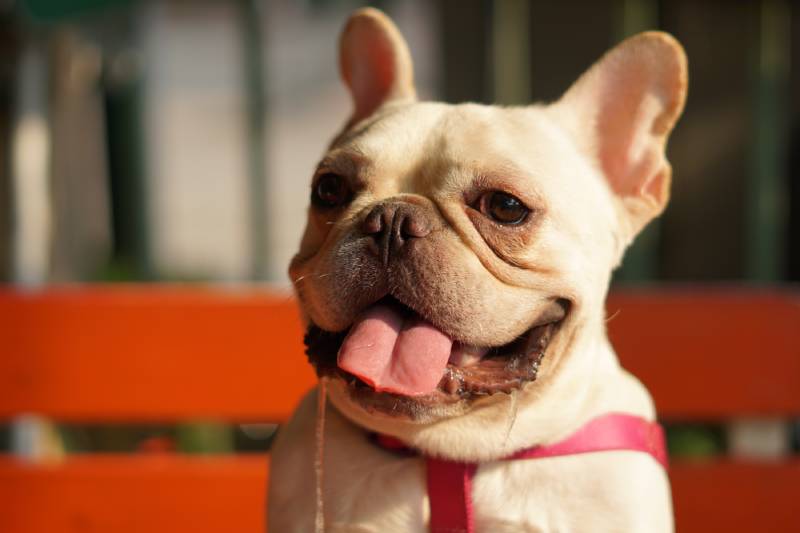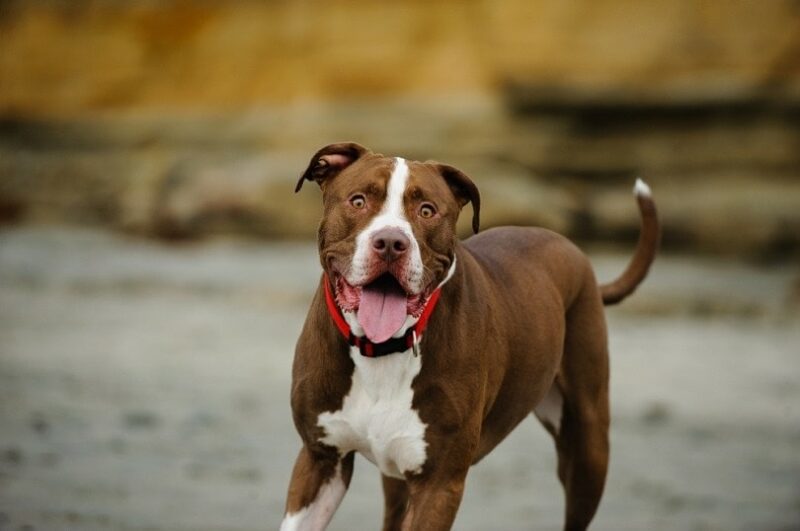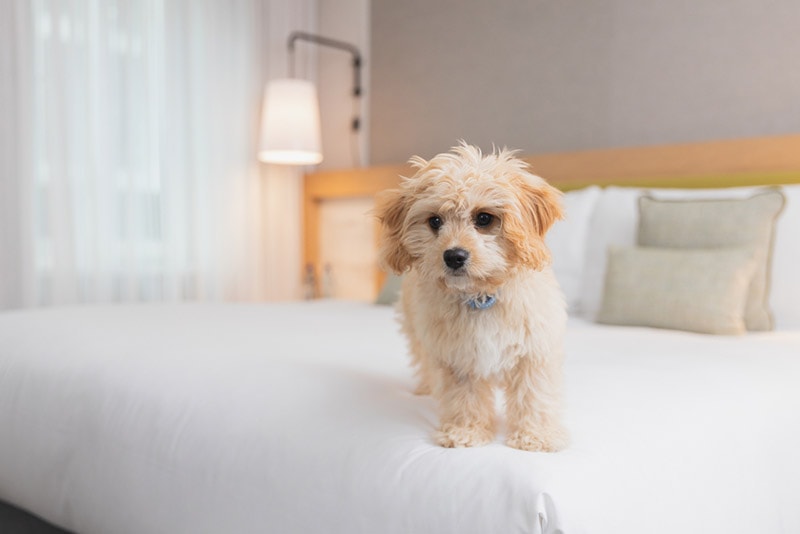Vietnamese Hmong Dog: Breed Info, Pictures, Traits & Facts
Updated on
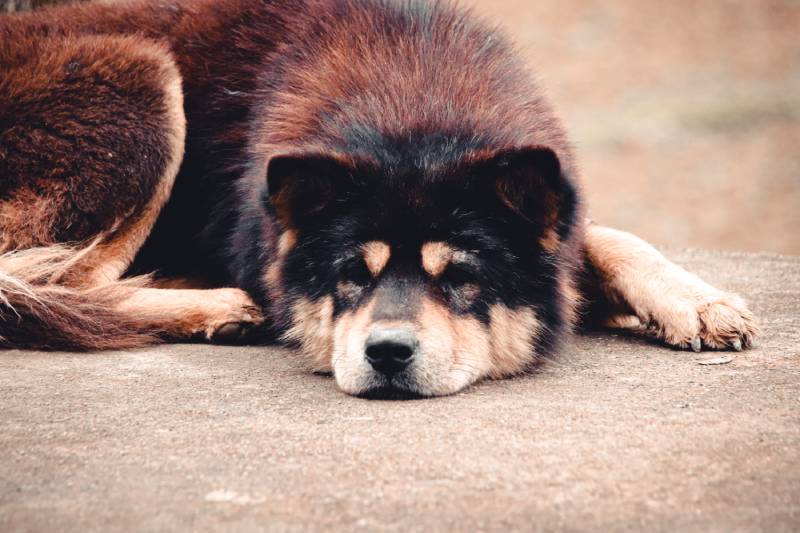
We bet that you’ve never heard of the Vietnamese Hmong Dog before! These rare dogs aren’t often found outside Vietnam. They are an ancient breed that lived with the Hmong people in the eastern and southeastern parts of Asia, particularly in the mountainous regions of northern Vietnam.
It’s believed that the Vietnamese Hmong Dog is descended from naturally bobtailed dogs from southern China and has a shared history with another Vietnamese breed, the Bac Ha Dog. They were used primarily as hunting dogs and as guard dogs for homes.
Breed Overview
| Height: | 18–21 inches |
| Weight: | 35–57 pounds |
| Lifespan: | 15–20 years |
| Colors: | Black, white, gray, liver, yellow, brindle |
| Suitable for: | Active families or singles, homes with yards, no other pets |
| Temperament: | Intelligent, energetic, confident, devoted, protective |
The Hmong Dog is a medium-sized spitz-type dog with a relatively stocky and muscular build and a large head and medium triangular ears. They have a double coat with a soft and thick inner coat and a short rough outer coat. The Hmong Dog can be gray, white, black, red, yellow, liver, or brindle in color.
Vietnamese Hmong Dog Characteristics
The Hmong Dog is a highly energetic dog that can be easy to train but isn’t the most sociable toward other animals and strangers. They have long lifespans, particularly compared to many other dog breeds, and they are quite robust and healthy.
Vietnamese Hmong Puppies
Since they are a Vietnamese national breed, it isn’t common to see these dogs outside their country, so we can only guess how much a Hmong puppy would be. The dog themselves might cost up to $3,000, but the few people who own one of these dogs outside of Vietnam must also pay for airfare to fly into the country and then fly home with the dog. This will enormously increase the price of one of these puppies.
There are a few steps that you will need to take if you are considering a puppy from overseas. First, you can try to find a Hmong Dog breeder through a kennel club, though they are only registered through the Vietnam Kennel Association.
You can try contacting this organization, and hopefully, this will help you find a Hmong Dog breeder.
- Documents: A responsible breeder will have all the necessary documentation for the puppy to travel.
- Medical history: The puppies should be fully vaccinated and checked by a vet. The vaccinations should cover the requirements for traveling to your country.
- Import regulations: You’ll need to check your own country’s pet import regulations and the transfer country’s regulations (Vietnam, in this case), which will likely apply to the Hmong puppy for traveling purposes.
- Rabies vaccine: Puppies usually get their rabies vaccine at 3 months of age at the earliest. There’s a waiting period of 21 to 30 days after the shot before the puppy can travel to your country.
- Echinococcus:This is a species of tapeworm, and some countries will expect your puppy to undergo preventative treatment 1 to 5 days before entry.
It’s a good idea to research everything before you attempt to bring home an overseas puppy. Different countries will have additional regulations, including quarantine rules, so triple-check everything.
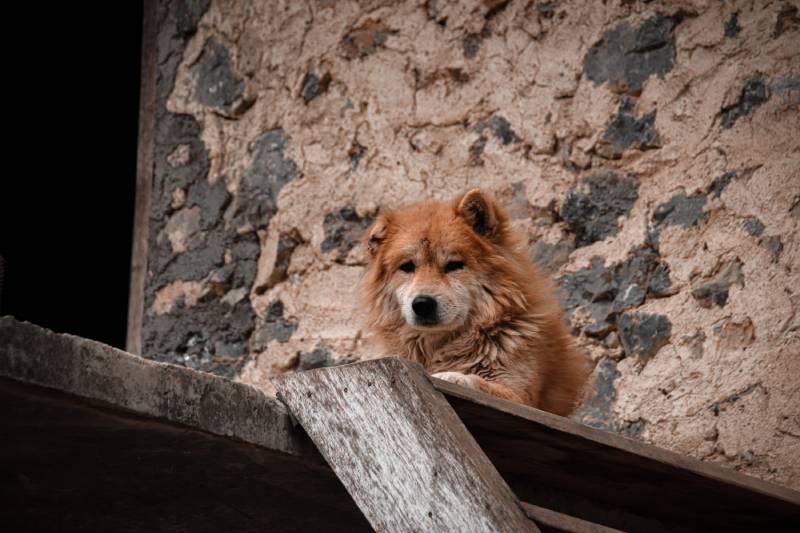
Temperament & Intelligence of the Vietnamese Hmong Dog
The Hmong Dog is an intelligent breed with a great deal of enthusiasm and energy, particularly as a working dog. They are confident and courageous dogs that will defend their family and territory fearlessly.
They form strong bonds with their owners and might experience separation anxiety when left alone for long periods. They are wary of strangers and make excellent guard dogs. The Hmong Dog is exceptionally loyal and calm and excels as a family and working dog.
Are These Dogs Good for Families? 👪
The Vietnamese Hmong Dog can make an excellent family dog, and their energy will make them fun to play with for equally energetic children. But they would do best with older children who have been taught how to properly treat dogs. The Hmong is not the best candidate for small children because of their high prey drive.
Does This Breed Get Along With Other Pets?
Not always. It might be fine if they are socialized at a young age with other pets, but their high prey drive won’t necessarily work with particularly small animals, like cats and rabbits.
Things to Know When Owning a Vietnamese Hmong Dog
Food & Diet Requirements 🦴
Investing in high-quality dog food is essential to keep your dog in the best of health. Find food formulated for your dog’s current age, size, and activity level, and provide constant access to clean water.
Follow the directions on the food bag for how much and how frequently to feed your dog, but otherwise, speak to your vet about the best way to ensure that your dog’s diet is nutritionally balanced.
Go easy on the treats, and try not to fall into the habit of giving table scraps to your dog. Many ingredients found in human foods are toxic for dogs. There’s also the risk of obesity.
Exercise 🐕
The Hmong Dog is energetic and will need a great deal of exercise to ensure that they don’t become destructive. A bored Hmong Dog will quickly destroy property, so make sure they have a minimum of two 40- to 60-minute walks every day.
They also shouldn’t be kept locked up in a crate or kennel for long periods of time. Spend time playing with your dog in addition to the walks. This gives them an outlet for all that energy and will help you form a closer bond
Training 🎾
Training the Hmong Dog is relatively easy. They are intelligent and devoted to their owner and have excellent memories, which makes them quick learners.
Training and socializing this breed is imperative, and due to their high prey drive, they should always be on a leash when out for a walk.
Grooming ✂️
Their coats are short but double-coated, so their fur is quite thick. They should be brushed a few times a week, as it’s easy for the undercoat to develop mats and tangles.
The Hmong Dog doesn’t need frequent baths, but they should be bathed when they get dirty or smelly. Just be sure to use a good dog shampoo on these occasions.
Beyond this, you’ll need to trim your Hmong Dog’s nails every 3 to 4 weeks, brush their teeth several times a week, and clean their ears about once a week.
Health and Conditions 🏥
The Vietnamese Hmong Dog is a strong and healthy breed that isn’t prone to many health conditions. They have a long lifespan too—a Hmong Dog might live until 20 years of age! That said, they are susceptible to a few illnesses.
The Hmong Dog has a double coat and is used to cold weather, as their origins are in the northern mountainous area of Vietnam. This also means they don’t do well with changes in temperature, particularly in hot weather.
They are prone to ticks because they are often outdoors, which also makes them vulnerable to tick-borne diseases. This breed tends to be susceptible to gastrointestinal issues because they have sensitive stomachs.
Male vs. Female
Female Hmong Dogs are smaller and lighter than the males, about 18 to 20.5 inches in height at the shoulder and 35 to 53 pounds. Male Hmong Dogs are 19 to 21 inches at the shoulder and weigh 40 to 57 pounds.
If they aren’t going to be used for breeding, you should consider surgery for both males and females.
Neutering the male dog will not only prevent pregnancies with other females but will also stop undesirable behaviors such as aggression and territorialism, which is already a problem with this breed. Spaying the female will stop her from going into heat, and she’ll be much less likely to run away.
3 Little-Known Facts About the Vietnamese Hmong Dog
1. The Vietnamese Hmong Dog Has a Natural Bobtail
The Hmong Dog gets their name from their tail, which can be a short or long half-bob tail, typically 1 to 6 inches in length. This is why they are also known as the Hmong Bobtail and the Hmong Docked Tail (which isn’t accurate because they acquire the bobtail naturally).
2. The Vietnamese Hmong Dog Is Also a Police Dog
Hmong Dogs have proven to be excellent hunting dogs but also protectors of livestock and the home. They can be working police dogs that help with sniffing and detection and help patrol the borders of Vietnam.
3. The Vietnamese Hmong Dog Is One of Vietnam’s Four Great National Dogs
The Vietnamese hold these dogs in high esteem and regard them as national treasures. The other three dogs are the Lai Dog, the Phu Quoc Ridgeback, and the Bac Ha Dog.
Final Thoughts
You don’t get much more unique of a breed than the Vietnamese Hmong! They are one of four breeds unique to Vietnam and are considered national treasures.
These dogs are loving, friendly, and protective of their loved ones and are quite aloof with strangers. This makes them excellent pets for companionship and for guarding your property and loved ones.
Featured Image Credit: marie martin, Shutterstock


